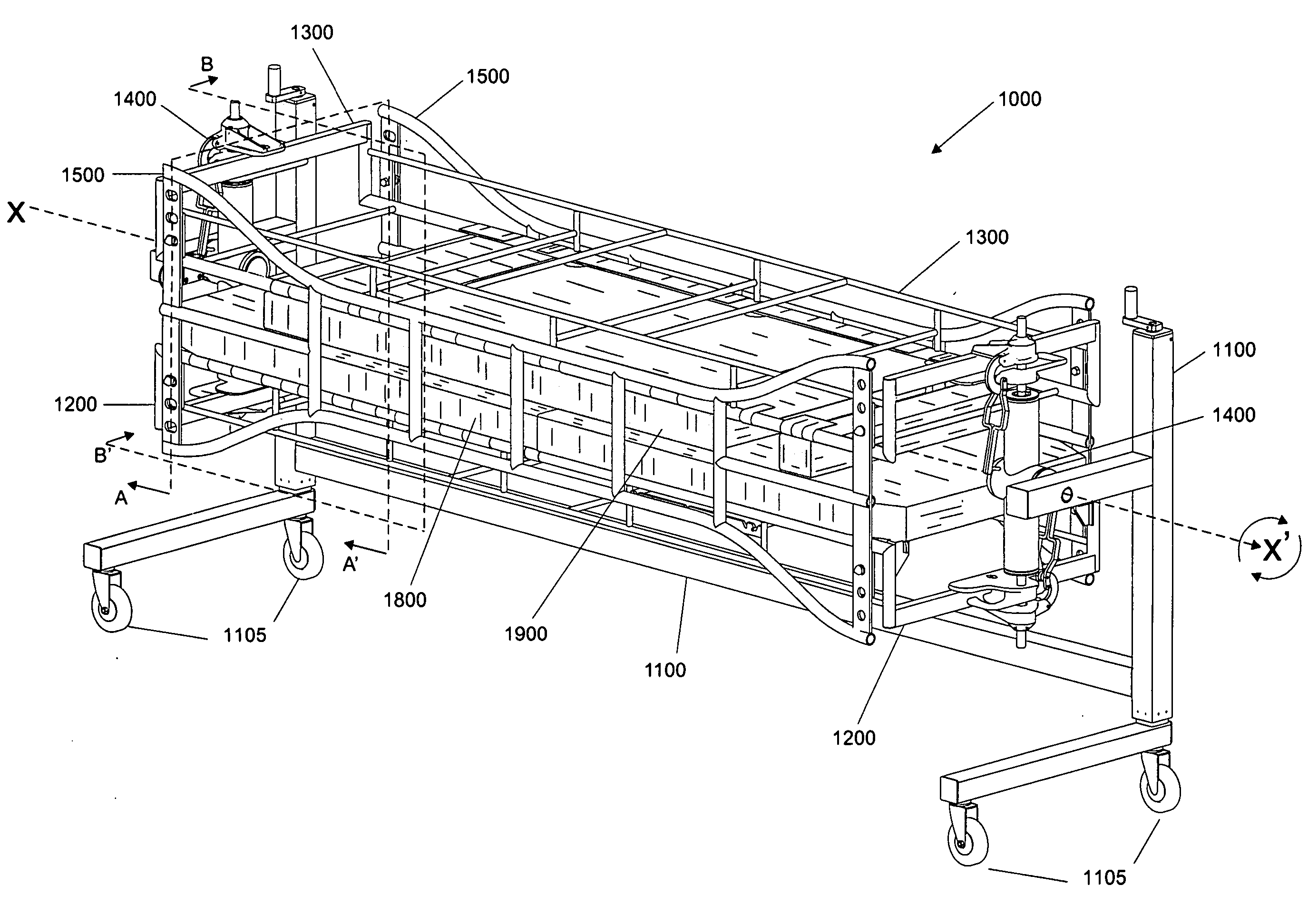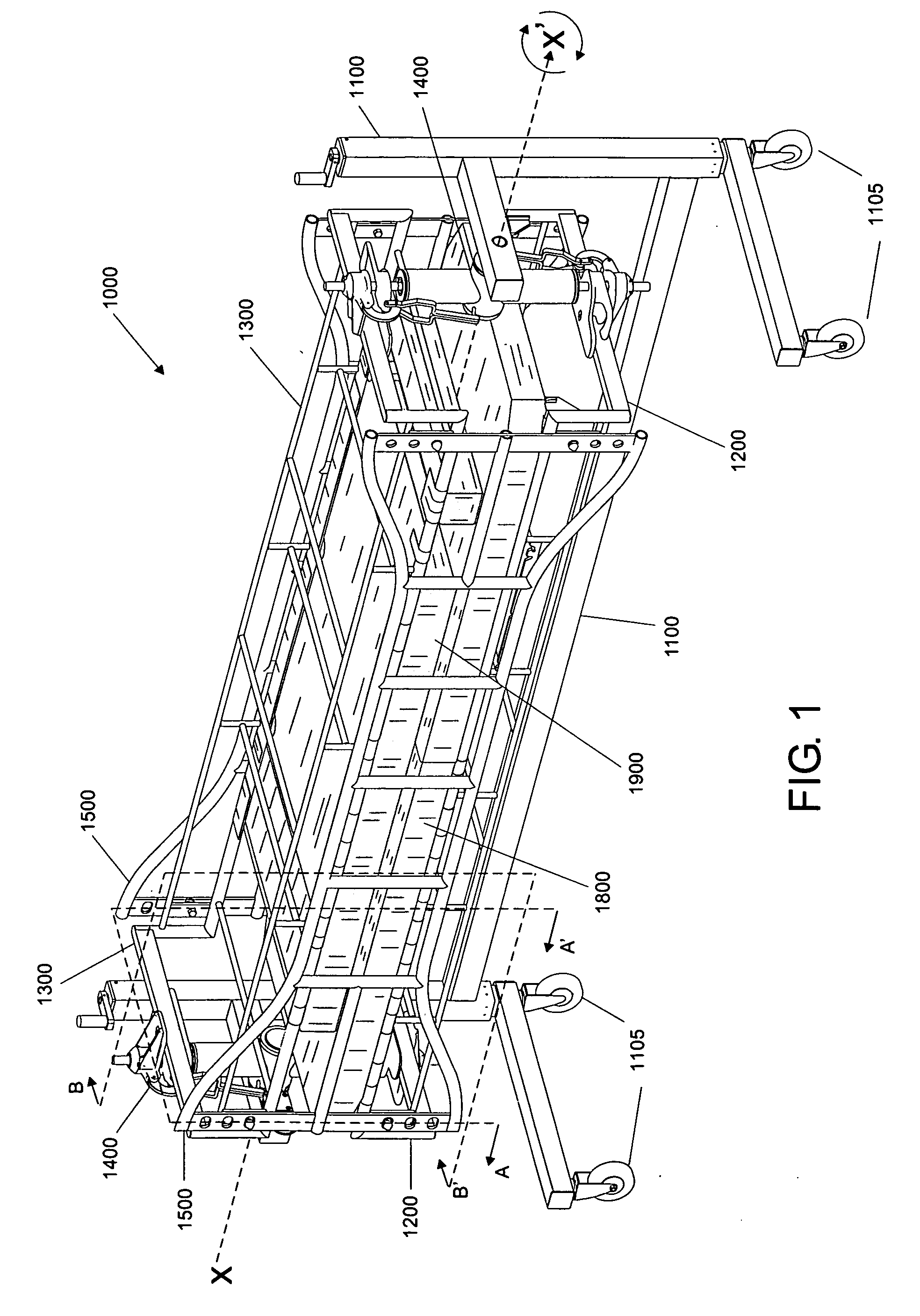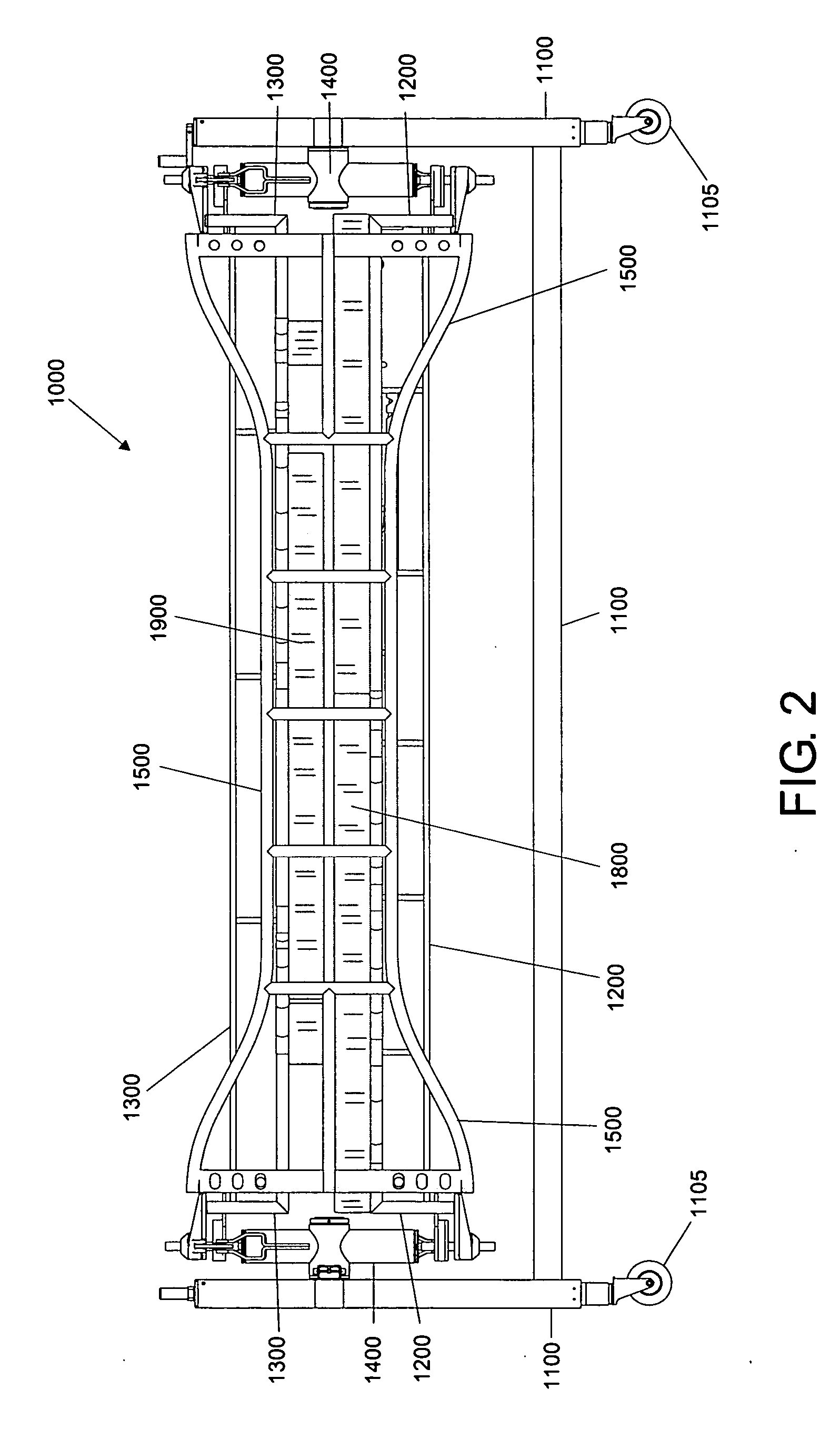Rotating therapeutic bed
a therapeutic bed and rotating technology, applied in the field of rotating therapeutic beds, can solve the problems of many people who make it to survive traffic accidents partially or fully lose their body motility control, and accidents that take pla
- Summary
- Abstract
- Description
- Claims
- Application Information
AI Technical Summary
Benefits of technology
Problems solved by technology
Method used
Image
Examples
Embodiment Construction
[0068] Referring to the appended drawings and more specifically to FIGS. 1-3, a rotating therapeutic bed 1000 is shown which is constructed according to a particularly specific embodiment of the present invention, which must be considered only as illustrative and non limitative in nature, such rotating therapeutic bed 1000 comprising in general and in combination: A structural base 1100 which includes turn wheels 1105 that are located on its lower part to allow relocating the bed from one place to another; a first removable stretcher 1200 having a first mattress 1800 to provide support for a patient (shown only in FIG. 11A of the appended drawings with referral number 2000) who is laying on his back; a second removable stretcher 1300 having a second mattress 1900 being located in an inverted fashion and over the first stretcher and patient, who is laying between the mattresses of both stretchers; the second stretcher 1300 providing support to the patient who is laying face down when...
PUM
 Login to View More
Login to View More Abstract
Description
Claims
Application Information
 Login to View More
Login to View More - R&D
- Intellectual Property
- Life Sciences
- Materials
- Tech Scout
- Unparalleled Data Quality
- Higher Quality Content
- 60% Fewer Hallucinations
Browse by: Latest US Patents, China's latest patents, Technical Efficacy Thesaurus, Application Domain, Technology Topic, Popular Technical Reports.
© 2025 PatSnap. All rights reserved.Legal|Privacy policy|Modern Slavery Act Transparency Statement|Sitemap|About US| Contact US: help@patsnap.com



